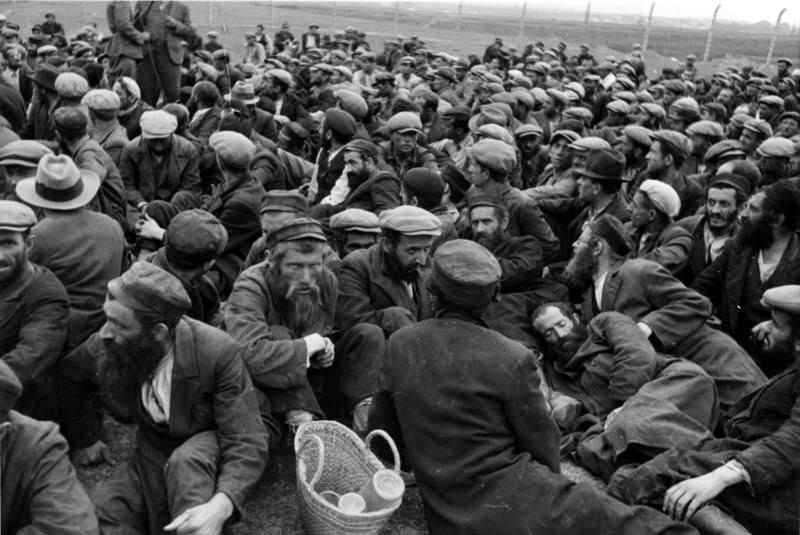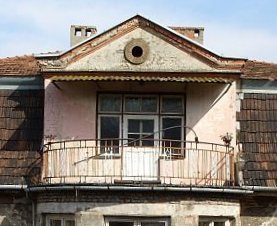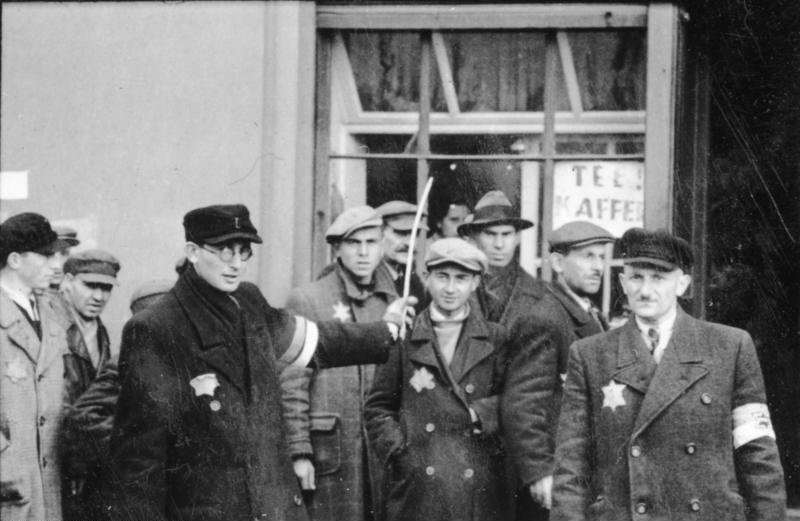|
Kraków Ghetto Jewish Police
The Kraków Ghetto Jewish Police were a law enforcement service in the Kraków Ghetto. The Kraków Ghetto Jewish Police were a local force of the '' Jüdischer Ordnungsdienst,'' often abbreviated as OD. The OD were overseen by the Judenrat of each ghetto. The Kraków OD, unlike many other Jewish Police forces, served as willing enforcers of Nazi policies and the Gestapo. Among other duties, they oversaw the liquidation of the Kraków Ghetto and helped transport Jews to Bełżec extermination camp. Leadership Symcha Spira (also: Symche Spira, Symche Spiro, or Symche Shapiro) was the Chief of the Kraków OD. Tadeusz Pankiewicz said that before the war Spira was an Orthodox Jew who wore a full beard and a long black capote. By the time he became head of the OD, he was clean shaven and wore a tailored uniform bearing many official looking insignias. Unlike the Kraków Judenrat, the Kraków OD were extremely unpopular under Spira's leadership. In part because of Spira's sycophantic q ... [...More Info...] [...Related Items...] OR: [Wikipedia] [Google] [Baidu] |
Kraków Ghetto
The Kraków Ghetto was one of five major metropolitan Nazi ghettos created by Germany in the new General Government territory during the German occupation of Poland in World War II. It was established for the purpose of exploitation, terror, and persecution of local Polish Jews. The ghetto was later used as a staging area for separating the "able workers" from those to be deported to extermination camps in Operation Reinhard. The Ghetto was liquidated between June 1942 and March 1943, with most of its inhabitants deported to the Belzec extermination camp as well as to Płaszów slave-labor camp, and Auschwitz concentration camp, rail distance. Background Before the German-Soviet invasion of 1939, Kraków was an influential centre for the Polish Jews who had lived there since the 13th century. Persecution of the Jewish population of Kraków began immediately after the German troops entered the city on 6 September 1939 in the course of the German aggression against Pol ... [...More Info...] [...Related Items...] OR: [Wikipedia] [Google] [Baidu] |
Blue Police
The Blue Police ( pl, Granatowa policja, Navy-blue police), was the police during the Second World War in German-occupied Poland (the General Government). The entity's official German name was ''Polnische Polizei im Generalgouvernement'' (Polish Police of the General Government; pl, Policja Polska Generalnego Gubernatorstwa). The Blue Police officially came into being on 30 October 1939 when Germany drafted Poland's prewar state police officers (''Policja Państwowa''), organizing local units with German leadership. It was an auxiliary institution tasked with protecting public safety and order in the General Government. The Blue Police, initially employed purely to deal with ordinary criminality, was later also used to counter smuggling, which was an essential element of German-occupied Poland's underground economy. The organization was officially dissolved and declared disbanded by the Polish Committee of National Liberation on 27 August 1944. After a review process, a number ... [...More Info...] [...Related Items...] OR: [Wikipedia] [Google] [Baidu] |
Group 13
The Group 13 network ( pl, Trzynastka, Yiddish: ''דאָס דרײַצענטל'') was a Jewish Nazi collaborationist organization in the Warsaw Ghetto during the German occupation of Poland in World War II. The rise and fall of the Group was likely a proxy for power struggles between various factions in the Nazi German military and bureaucracy, for their own financial benefit. Background The group was founded in December 1940 and led by Abraham Gancwajch, the former head of Hashomer Hatzair in Łódź. ''The Thirteen'' took its informal name from the address of its main office at 13 Leszno Street in Warsaw. Sanctioned by Sicherheitsdienst (SD), and also known as the Jewish Gestapo, the unit reported directly to the local Gestapo office. Organizational structure Group 13 had between 300 and 400 uniformed Jewish officers, distinguished by caps with green bands. Membership in the ''13'' required payment of several thousand zlotys, issued by the German Nazi-controlled bank ... [...More Info...] [...Related Items...] OR: [Wikipedia] [Google] [Baidu] |
Żagiew
Żagiew ("The Torch", ''Die Fackel''), also known as Żydowska Gwardia Wolności (the "Jewish Freedom Guard"), was a Nazi-collaborationist Jewish agent-provocateur group in German-occupied Poland, founded and sponsored by the Germans and led by Abraham Gancwajch. Operations Many ''Żagiew'' members were related to the collaborationist Jewish organization Group 13, which was also led by Gancwajch. The organization operated primarily within the Warsaw Ghetto. Żagiew was established in late 1940 and existed until the Ghetto's elimination during the 1943 Warsaw Ghetto Uprising. Żagiew had over a thousand Jewish secret agents and some were permitted by their Gestapo handlers to possess firearms. Żagiew's prime goal was to infiltrate the Jewish resistance network and reveal its connections with the Polish underground that aided and hid Jews in the General Government. The organization was able to inflict considerable damage on both fronts.Henryk Piecuch, ''Syndrom tajnych s� ... [...More Info...] [...Related Items...] OR: [Wikipedia] [Google] [Baidu] |
The Holocaust In Poland
The Holocaust in Poland was part of the European-wide Holocaust organized by Nazi Germany and took place in German-occupied Poland. During the genocide, three million Polish Jews were murdered, half of all Jews murdered during the Holocaust. The Holocaust in Poland was marked by the construction of death camps by Nazi Germany, German use of gas vans, and mass shootings by German troops and their Ukrainian and Lithuanian auxiliaries. The extermination camps played a central role in the extermination both of Polish Jews, and of Jews whom Germany transported to their deaths from western and southern Europe. Every branch of the sophisticated German bureaucracy was involved in the killing process, from the interior and finance ministries to German firms and state-run railroads. Approximately 98 percent of Jewish population of Nazi-occupied Poland during the Holocaust were killed. About 350,000 Polish Jews survived the war; most survivors never lived in Nazi-occupied Poland, but ... [...More Info...] [...Related Items...] OR: [Wikipedia] [Google] [Baidu] |
Auschwitz Concentration Camp
Auschwitz concentration camp ( (); also or ) was a complex of over 40 concentration and extermination camps operated by Nazi Germany in occupied Poland (in a portion annexed into Germany in 1939) during World War II and the Holocaust. It consisted of Auschwitz I, the main camp (''Stammlager'') in Oświęcim; Auschwitz II-Birkenau, a concentration and extermination camp with gas chambers; Auschwitz III-Monowitz, a labor camp for the chemical conglomerate IG Farben; and dozens of subcamps. The camps became a major site of the Nazis' final solution to the Jewish question. After Germany sparked World War II by invading Poland in September 1939, the ''Schutzstaffel'' (SS) converted Auschwitz I, an army barracks, into a prisoner-of-war camp. The initial transport of political detainees to Auschwitz consisted almost solely of Poles for whom the camp was initially established. The bulk of inmates were Polish for the first two years. In May 1940, German criminals brought to ... [...More Info...] [...Related Items...] OR: [Wikipedia] [Google] [Baidu] |
Kraków-Płaszów Concentration Camp
, known for = , location = , coordinates = , built by = , operated by = Nazi Germany , commandant = Amon Göth (until September 1944)Arnold Büscher (September 1944 – January 1945) , original use = , construction = , in operation = 28 October 1942 – January 1945 , gas chambers = , prisoner type = , inmates = , killed = , liberated by = Red Army, 20 January 1945 , notable inmates = , notable books = , website = Płaszów () or Kraków-Płaszów was a Nazi concentration camp operated by the SS in Płaszów, a southern suburb of Kraków, in the General Governorate of German-occupied Poland. Most of the prisoners were Polish Jews who were targeted for destruction by Nazi Germany during the Holocaust. Many prisoners died because of executions, forced labor, and the poor conditions in the camp. The camp was evacuated in J ... [...More Info...] [...Related Items...] OR: [Wikipedia] [Google] [Baidu] |
Occupation Of Poland (1939–1945)
The occupation of Poland by Nazi Germany and the Soviet Union during World War II (1939–1945) began with the German-Soviet invasion of Poland in September 1939, and it was formally concluded with the defeat of Germany by the Allies in May 1945. Throughout the entire course of the occupation, the territory of Poland was divided between Nazi Germany and the Soviet Union (USSR) both of which intended to eradicate Poland's culture and subjugate its people. In the summer-autumn of 1941, the lands which were annexed by the Soviets were overrun by Germany in the course of the initially successful German attack on the USSR. After a few years of fighting, the Red Army drove the German forces out of the USSR and crossed into Poland from the rest of Central and Eastern Europe. Sociologist Tadeusz Piotrowski argues that both occupying powers were hostile to the existence of Poland's sovereignty, people, and the culture and aimed to destroy them. Before Operation Barbarossa, German ... [...More Info...] [...Related Items...] OR: [Wikipedia] [Google] [Baidu] |
Operation Reinhard In Kraków
, location = Occupied Kraków , date = June 1942 - March 1943 , incident_type = Mass deportations to extermination camps , perpetrators = Amon Göth, Julian Scherner, Odilo Globočnik and others , participants = , organizations = Waffen-SS, ''Schutzstaffel'', Order Police battalions, ''Sicherheitsdienst'' , camp = Belzec extermination camp Auschwitz-Birkenau Kraków-Płaszów concentration camp , ghetto = Kraków Ghetto including other Jewish ghettos in German-occupied Poland , victims = Over 11,000 , survivors = , witnesses = , documentation = , memorials = Ghetto site and deportation point , notes = The most lethal phase of the Holocaust. Operation Reinhard in Kraków, often referred to by its original codename in German as ''Aktion Krakau'', was a major 1942 German Nazi operation against the Jews of Kraków, Poland. It was headed by SS and Police Leader Julian Scherner from the Waffen-SS. T ... [...More Info...] [...Related Items...] OR: [Wikipedia] [Google] [Baidu] |
Jewish Ghetto Police
The Jewish Ghetto Police or Jewish Police Service (german: Jüdische Ghetto-Polizei or ''Jüdischer Ordnungsdienst''), also called the Jewish Police by Jews, were auxiliary police units organized within the Nazi ghettos by local ''Judenrat'' (Jewish councils). Overview Members of the Jewish Police did not usually have official uniforms, often wearing just an identifying armband, a hat, and a badge, and were not allowed to carry firearms, although they did carry batons. In ghettos where the Judenrat was resistant to German orders, the Jewish police were often used (as reportedly in Lutsk) to control or replace the council. One of the largest Jewish police units was to be found in the Warsaw Ghetto, where the Jüdischer Ordnungsdienst numbered about 2,500. The Łódź Ghetto had about 1,200, and the Lwów Ghetto 500. Anatol Chari, a policeman in the Łodz Ghetto, in his memoirs describes his work protecting food depots, controlling bakery employees, as well as patrols aimed at ... [...More Info...] [...Related Items...] OR: [Wikipedia] [Google] [Baidu] |
Jewish Resistance In German-occupied Europe
Jewish resistance under Nazi rule took various forms of organized underground activities conducted against German occupation regimes in Europe by Jews during World War II. According to historian Yehuda Bauer, Jewish resistance was defined as actions that were taken against all laws and actions acted by Germans. The term is particularly connected with the Holocaust and includes a multitude of different social responses by those oppressed, as well as both passive and armed resistance conducted by Jews themselves. Due to military strength of Nazi Germany and its allies, as well as the administrative system of ghettoization and the hostility of various sections of the civilian population, few Jews were able to effectively resist the Final Solution militarily. Nevertheless, there are many cases of attempts at resistance in one form or another including over a hundred armed Jewish uprisings. [...More Info...] [...Related Items...] OR: [Wikipedia] [Google] [Baidu] |








